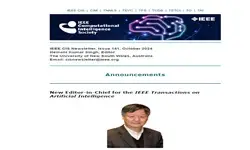Tutorial - Graded Logic Aggregation and its Applications in Decision Engineering
Jozo Dujmovic, San Francisco State University, USA
-
Members: FreeCIS
IEEE Members: Free
Non-members: FreeLength: 02:19:36
Jozo Dujmovic, San Francisco State University, CA, USA ABSTRACT: The tutorial presents graded logic as a soft computing model of observable and measurable human reasoning. Basic logic operations identifiable in human reasoning include various symmetric and asymmetric forms of simultaneity and substitutability. The novelty of this tutorial is the development of mathematical models of soft logic aggregators from experiments with human subjects. That proves the credibility of logic aggregators. The tutorial presents the complete and continuous spectrum of graded logic aggregators from drastic conjunction to drastic disjunction. That includes hyperconjunction (aggregators with andness above 1) and hyperdisjunction (aggregators with orness above 1). Averaging aggregators (partial conjunction, neutrality, and partial disjunction) are inserted between the hyperconjunction and hyperdisjunction, providing the continuous andness-directed transition from drastic conjunction to drastic disjunction. Semantic components of human reasoning are expressed using weights and selecting annihilators. Using basic models of simultaneity and substitutability we then create asymmetric aggregators of conjunctive and disjunctive partial absorption. These models and negation are necessary in graded propositional calculus.The second part of the tutorial is focused on applicability of graded logic. We are primarily interested in decision support systems. The fundamental pillar of decision engineering is a Standard Model of Evaluation Reasoning (SMER), derived from observations of human evaluation decision making. SMER includes the aggregation structure based on graded propositional calculus. It provides explainable decisions. The tutorial includes examples of building logic aggregation structures and complex evaluation criteria. The detailed examples show medical applications of presented methodology for evaluating patient disability, the problem of risky therapy, and the vaccination priority evaluation applied to COVID-19.


